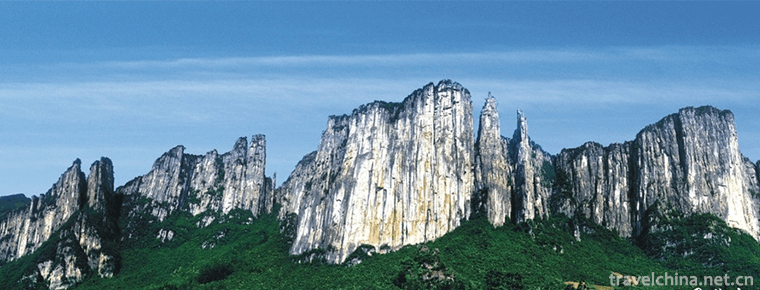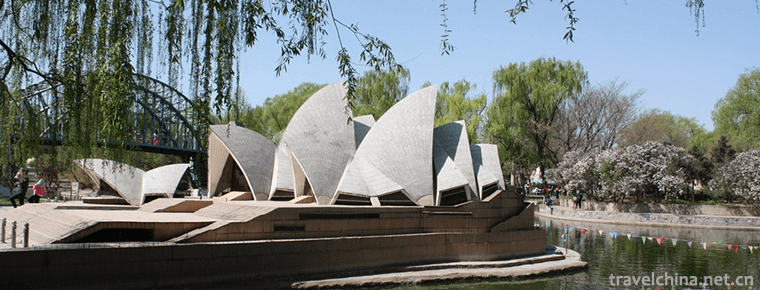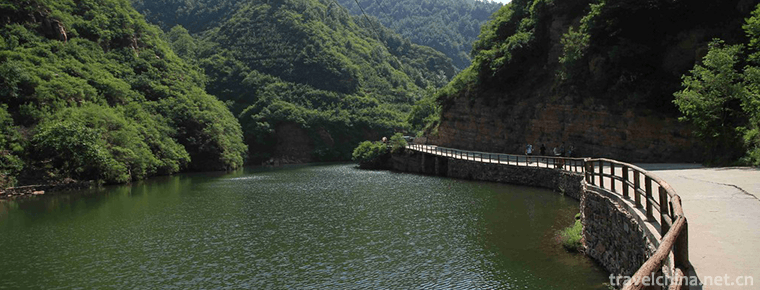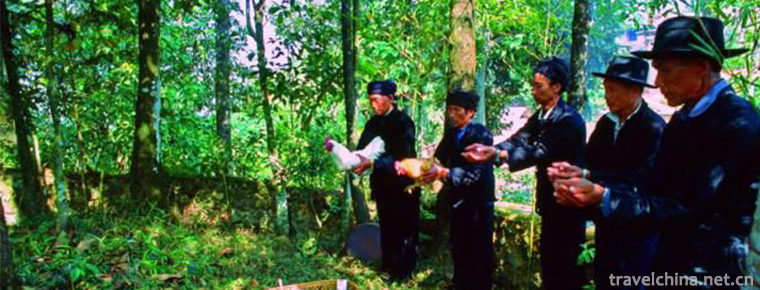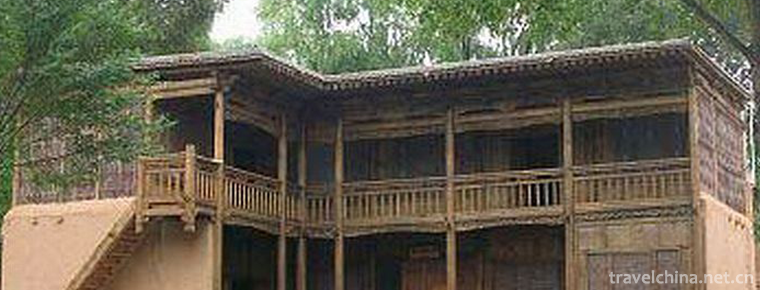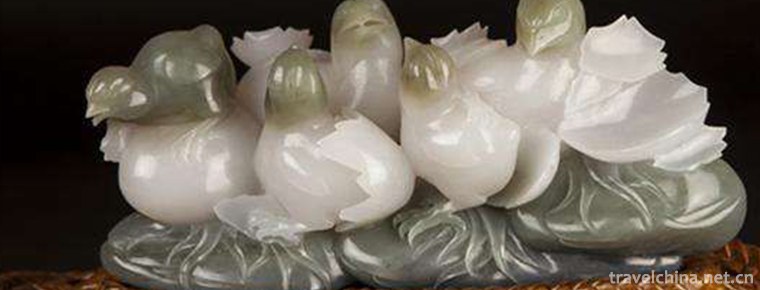Guo Moruo
Guo Moruo
Guo Moruo (1892 1978), formerly known as Guo Kaizhen, the word Ding Tang, the warrior, the baby name leopard, the pseudonym of Mo, Michael, Guo Dingtang, Shi Tuo, Gao Ruhong, Yang Yi and so on. Born in November 16, 1892 Sichuan Leshan sandy bay Graduated from Japan Kyushu Imperial University Modern literature Home, Historian One of the founders of New Poetry The first Dean of the Chinese Academy of Sciences , University of Science & Technology China First president Foreign academician of the Soviet Academy of Sciences
In 1914, Guo Moruo studied in Japan. Kyushu Imperial University Learn medicine. In 1921, he published his first book of new poetry. Goddess ; In 1930, he wrote " Social studies in ancient China " In 1949, Guo Moruo was elected chairman of the China National Arts and Literature Association.
Previous appointment Chinese Academy of Sciences Director of the Department of philosophy and Social Sciences, first director of the Institute of history, chairman of the Chinese people's world peace committee, honorary president of China Japan Friendship Association, China Federation of literary and Art Circles The chairman and other important positions were elected to the ninth, tenth, Eleventh Central Committee of the Communist Party of China, the second, third and fifth CPPCC vice chairmen.
In June 12, 1978, the disease was invalid for a long time. Beijing He passed away at the age of 86.
Paul Mauriat's History
Born in November 16, 1892 Sichuan Province Leshan County Copper River Shawan.
In 1906, he entered Jiading higher learning and began to accept democratic ideas.
In 1914, Guo Moruo studied in Japan. Kyushu Imperial University Learn medicine.
In 1919, The May 4th Movement He launched an organization for saving the nation in Fukuoka, Japan. He joined the new culture movement, and wrote poems such as "Phoenix Nirvana", "earth, my mother" and "coal in furnace".
In 1921, the first new book of poetry, the goddess, was published. goddess "Is the foundation stone of Chinese new poetry, and Guo Moruo has become China. new poetry One of the important founders of the same year. Cheng Fei Wu , founding member of the Creation Society And others founded the Shanghai literature society "creation society". New Culture Movement The important flag bearer.
In March 15, 1922, creation quarterly It came out. During this period, Guo Moruo's poems and Hu Shi's new cultural movements and 54 works influenced the early poetry creation in Taiwan during the Japanese occupation period.
From 1926 to 1927, Ren Zhongshan University, Wuchang Members of the Preparatory Committee.
In July 1926, Guo Moruo took the pen and joined the army. the National Revolutionary Army The Northern Expedition Northern Expeditionary Army Chief political officer, deputy director.
On the eve of the "four and one or two" incident in 1927, Guo Moruo wrote " Today's Jiang Jieshi, please. The article exposes Jiang Jieshi's act of "betraying the state, betraying the masses and betraying the revolution", which has a great impact on the masses. Guo Moruo was wanted and then joined. Nanchang Uprising On the way, join the Communist Party of China. She was forced to exile in Japan in February 1928.
In 1930, he wrote " Social studies in ancient China By referring to the historical documents and documents at that time, Marx doctrine About people
The conclusion of the development rule of sociology proves that China has also experienced primitive society, slave society and feudal society. Guo Moruo created a historical materialism school in China, which has occupied the mainstream position of Chinese academic circles since then.
With the guidance of Marx doctrine, the Chinese Communist Party has come to the ruling stage. The book's viewpoint is regarded as one of the reference textbooks for primary and secondary school textbooks. Guo Moruo relied on this period. Oracle Research and Wang Guowei , Luo Zhenyu , Dong Ding bin Also called Four oracle bones And was elected to the first session in 1948. Academia Sinica Academician.
After that, National Government During the period of the third Hall of the Political Department of the Military Commission, the great cultural movement of Wuhan was launched. Singing All walks of life, drama, film and other sectors publicize the war of resistance. He also created a large number of drama scripts, inspiring popular morale, including Qu Yuan, and Tiger symbol "," Flower of Chinese flowering cherry "," Southern Crown grass "," Peacock gall "," Gao Jianli "Six historical tragedies," Qu Yuan The most popular. Professor, Department of history, NTU Wang Yuan Yi It is believed that the works of Guo Moruo and others in this period created a literary and cultural road that combines public form with elite creation, and coexists with modernity and traditional national culture.
In 1948, during the Kuomintang Communist civil war, Guo Moruo was archaeology and Oracle The great achievements of the study were elected to the first session. Academia Sinica Academician. Pan Guangzhe, a researcher at the Institute of modern history, Academia Sinica, described the election of academicians of Academia Sinica and Guo Moruo's election process in the "crown of knowledge field: from the election of the first academician of Academia Sinica".
In 1949, Guo Moruo was elected chairman of the China National Arts and Literature Association.
From September 1958 to June 1978, Ren Chinese Academy of Sciences First Dean, University of Science & Technology China The first headmaster, member of the Central People's government, vice premier of the central government and chairman of culture and Education Committee, vice chairman of the Standing Committee of the National People's Congress, director of the Department of philosophy and social sciences of the Chinese Academy of Sciences, the first director of the Institute of history, the chairman of the Chinese people's defense of the world peace committee, the honorary meeting of the China Japan Friendship Association and the chairman of the Chinese Literary Federation, were elected as the ninth, tenth, Eleventh Central Committee of the Communist Party of China and vice chairman of the second, third and fifth CPPCC National Committee.
In June 12, 1978, he died in Beijing for a long time because of chronic illness. He was 86 years old.
He has compiled the Chinese historical manuscript and the oracle bone collection. The complete works of Guo Moruo Volume 38.
Calligraphy features
In the art of calligraphy, Guo Moruo also achieved remarkable achievements and played an important role in the history of modern calligraphy. Guo Moruo wrote the 8 key words for learning books by "turning back to the front and going back to the level." The style of calligraphy not only emphasizes teacher's commitment, but also makes innovations. It shows bold creative spirit and vivid characteristics of the times.
It is known as "Guo style". Guo Moruo has a long history of writing, his writing skills are free and easy, his work is flexible, and his lingering charm is infinite. Although his regular script works are not many, he is particularly skilled in his writing. Guo Moruo's exploration and practice in calligraphy art lasted for more than 70 years. Young Guo Moruo's calligraphy was recognized by the society and began in the 1911.
After the founding of new China, Guo Moruo engaged in more abundant calligraphy creation after heavy national affairs. He is generous and knowledgeable. He has left many calligraphy and calligraphy for all places of interest, industrial and mining schools, and all walks of life and friends from all over the world. The number of calligraphy works is large and its influence is extensive. One of the masterpieces of Guo Moruo's calligraphy works is the huge calligraphy work to commemorate the founding of 15th anniversary.
In his calligraphy works, there is a breath of "Wen" everywhere, which is wrapped up in his bosom and transformed into thousands of thoughts, trickling out from his pen, forming a blending of his knowledge of poetry, literature and history, and presenting it to readers in the form of calligraphy.
Family members
According to Leshan's Guo family genealogy, Guo Moruo's Ancestral home Ninghua County, Ting Zhou Prefecture, Fujian, is a Hakka people in Western Fujian. Du Aozhen, a mother, is a child of a declining official family. Ancestor Guo Fuan Guo Ziyi Descendants.
Zhang Qiong Hua
In 1912, Guo Moruo was helpless under the arrangement of his parents. Zhang Qiong Hua (1890 -1980) marriage, the actual two people and no feelings.
After enjoying five days of marriage, Guo Moruo left home, and two did not divorce. In the next 68 years, Zhang Qionghua remained alone in Guo Moruo's hometown. When Guo returned to the countryside in 1939, he apologized to Zhang Qionghua, who was still alive. Zhang died in Leshan in 1980, leaving no children.
Sato Fu son
In 1916, Guo Moruo lived in cohabitation with Misaki Sato Fuko in Japan, and Misaki Sato Fuko broke off the relationship with her parents. Guo Moruo named him Anna.
When the war of resistance against Japan broke out in 1937, Guo Moruo left without saying goodbye to Japan and severed ties with Anna. Since then, Sato Fu son lived in Dalian most of the time, renamed it. Annie Kuo I live with my son Guo Hefu.
Guo Anna was elected to the sixth CPPCC National Committee. After the outbreak of the cultural revolution, it was affected. Here she also proposed to return to Japan to see her mother, who was 100 years old, but failed for a long time. It wasn't until 1974 that Anna, eighty, was able to return to Japan. She returned to Japan to deal with the house in the city of Sichuan, which he lived with Guo Moruo. In second years, she went to Beijing to see Guo Moruo, who was hospitalized at that time, which became their last meeting.
Guo Moruo and Anna have five children.
Eldest son: Guo He Fu He is a chemist at the Chinese Academy of Sciences and director of the Dalian Institute of Chemical Physics, Chinese Academy of Sciences.
Second son: Guo Bo He is a architect and photographer. He was the chief engineer of the Shanghai civil design institute before retirement.
The three son: Guo Fusheng (also known as Fo Sheng) is an engineer in the Institute of zoology, Chinese Academy of Sciences.
Daughter: Guo Shuyu, then married with Lin Ai Xin and gave birth to a girl. After studying in Japan, he was naturalized as a Japanese and renamed Fujita Rina. He is currently a professor of Chinese literature at the Department of literature of the University of Japanese National Museum and participated in the establishment of the Guo Moruo Research Society of Japan.
The four son: Guo Zhihong is Central Conservatory of Music Visiting professor.
Yu Liqun
In 1938, Guo Moruo and Yu Liqun (1916 -1979) cohabitation, and in 1939 the summer to make a wedding; in 1979, in Liqun hang died in Beijing's former residence. There are four men and two women.
Son Guo Hanying graduated from Tsinghua University Department of engineering, Institute of theoretical physics, Chinese Academy of Sciences Researcher and director.
Second son Guo Shiying studied Peking University Department of philosophy, 1968 Kasetsart University in Beijing The Red Guard grabbed a confession by torture, and soon fell down from the four floor.
Three sons Guo Minying studied Central Conservatory of Music In 1967, the PLA Navy joined in the sudden suicide of the Chinese people's Liberation Army.
Guo Shuying, the eldest daughter, graduated from University of Science & Technology China Department of Biophysics, general manager of Beijing Zhong Pei economic development center.
Second daughter Guo Pingying graduated from Renmin University of China Department of international politics, deputy director of the Institute of history of the Chinese Academy of Social Sciences and curator of Guo Moruo Memorial Hall.
Four sons Guo Jianying graduated from Tsinghua University Undergraduate, Peking University Master, working in Computer Corporation of America. Famous conductor, music translator and music activist.
Character evaluation
As early as the "54" movement, he used the poetic creation full of revolutionary passion to praise the people's revolution, praise socialism and communism, and open up the poetic style of the generation to become the founder of the new poetry movement in China. His historical drama is a powerful weapon for educating the people and attacking the enemy. ( Deng Xiaoping review )
If he said ten sentences, only three sentences were right, those seven wrong sentences could stimulate everyone's research dialectics. That said, the three sentence saved many wrong ways for the people of the same era and later. ( Wen Yiduo review )
Guo Moruo was a cultural giant in twentieth Century and a cultural giant in Chinese history. 54 after the campaign, there are not many people who have made achievements in many aspects like Guo Moruo. They can be described in terms of wizards. Guo Moruo's achievements in academic fields, especially in the history of Chinese poetry, in the study of ancient Chinese history and in the study of ancient writings, are brilliant and great. In recent years, especially in recent years, Guo Moruo's criticism has been consistent with facts and distorted by facts. The emergence of criticism and new ideas is a manifestation of social progress. Generally speaking, it will promote academic progress and cultural development. A normal academic environment should be criticized and criticized. However, in the introspection of Guo Moruo, some articles and some scholars have adopted a frivolous attitude. This is not correct. We should pay attention to studying him in a scientific manner. (China Science net review)
Guo Moruo was a figure in the history of Chinese historiography in twentieth Century that no one could avoid and could not erase. His lofty academic status was determined by his outstanding contributions. There are many scholars in his history such as history, archaeology, archeology, ancient utensils, literature and art. There were few people in Chinese history in twentieth Century, and few before twentieth Century. Guo Moruo's "reflection" actually involves the question of how to understand the development of Chinese culture in the twentieth Century, namely, what is the excellent cultural heritage of twentieth Century and the direction of the development of Chinese culture in twenty-first Century. The evaluation of Guo Moruo, like the evaluation of any historical personage, sticks to scientific theory and methodology, insists on the principle of "knowing others and discussing the world", and can not be divorced from certain historical conditions, and must stress on revealing the essence and the mainstream. If we reverse the position of mainstream and tributaries, exaggerate the tributaries to an infinite degree, and even hesitate to slander and abuse, they will deviate from the principles and methods to evaluate historical figures. ( Qu Lin Dong Comment)
Mr. Guo Moruo is not only talented, but also has a profound foundation in Sinology. stay Oracle , Inscriptions on bronze In research, he did have original contributions. That is to say Social studies in ancient China "," Ten criticisms "," Bronze Age "There are still quite a few opinions on several books. Although he followed the words of one family, he was different from the formula. I have severely criticized him for not using his research results without acknowledges and committing academic research. However, I did not kill him. However, in terms of modern academic norms, he is more natural than he is, and discipline of history is far from enough. This is mainly because he is different from Er Chen (Chen Yuan, Chen Yinque), Lv Simian and so on. Scholars can learn from his three books, but beginners should not start with such works. (Yu Ying's Commentary)
Commemoration of future generations
Guo Moruo Scholarship
In February 25, 1980, The State Council Formal approval University of Science & Technology China The name "Guo Moruo" is set up. Guo Moruo Scholarship The scholarship is the first scholarship in New China. The Guo Moruo scholarship is Chinese Academy of Sciences Take advantage of University of Science & Technology China The 20 year old president Guo Moruo handed in a special scholarship to the Party committee of the hospital for $150 thousand, to encourage students to climb the peak of science and technology.
Commemorative Stamp
November 16, 1982 China issued "J87 Comrade Guo Moruo's birthday 90th anniversary", in memory of Mr. Guo Moruo.
Guo Moruo prize for literature and art
In 1987, to commemorate Guo Moruo's outstanding contribution to Chinese culture and art, China Federation of literary and Art Circles We have approved the establishment of the Guo Moruo prize for the arts, especially the artists who have made outstanding contributions to the Chinese literary and art circles. The award includes eight categories: Literature Award, calligraphy award, Art Award, Photography Award, Dance Award, music award, folk literature and drama, and every five years. The scope of the selection is Chinese and overseas Chinese art circles, with young and middle-aged artists as the main objects.
The venue for the Guo Moruo prize for literature and art was established in Guo Moruo's hometown of Leshan. It was a permanent organizer of the Leshan Municipal People's government and the Leshan Federation of literary and art circles. It accepted the guidance, approval and supervision of the Chinese Federation of Arts and literature. Currently, it has held six sessions, and the mountain flower awards and Horse Awards are also known as the three major professional arts awards in China.
Monument
In June 12, 1978, Guo Moruo died in Beijing, according to his will.
Guo Moruo's ashes are sprinkled in terraced fields of Dazhai people's commune, Xiyang County, Shanxi. Dazhai built a monument for him.
Guo Moruo square
In September 20, 1988, University of Science & Technology China 30th anniversary celebration, the school held the unveiling ceremony of the statue of Guo Moruo. Yan Ji Si Inscription for the bronze statue of Guo Moruo: "at the 30th anniversary time of the founding of the school, honor Guo Moruo, remembering the achievements of University of Science & Technology China, headed by Guo Moruo. The four character system of Guo Moruo's image Deng Xiaoping It was written in November 28, 1987.
Former residence Memorial Hall
The former residence of Guo Moruo in Chongqing and the third Hall of the Political Department of the national government Military Commission and the former site of the cultural work committee are located in the banana garden village (the family courtyard) of the West Wing Town, Shapingba District, Chongqing. The old house covers an area of 10190 square meters, with a building area of 1566 square meters, and its architectural style is the late Qing quadrangle, the bucket structure, the small green tile roof and the sloping roof.
In September 2000, Guo Moruo's old residence was Chongqing The municipal government is listed as the first municipal cultural relic protection unit after the municipality directly under the central government. In March 2005, the restoration project of the old residence was officially launched, and the main project of the former residence was completed in June 30th, and it was officially opened to the public in September 7th.


-
Old Beijing fried Morchella
The most famous famous food in Beijing is old Beijing tripe and Beijing roast duck. As for the oldest and most prosperous snacks in Beijing, belly burst is definitely the best among them..
Views: 162 Time 2018-10-27 -
Enshi Grand Canyon
Enshi Grand Canyon is located in Tunpu Township and Banqiao Township, Enshi City, Hubei Province. It is located at the junction of Hunan, Chongqing and Hubei provinces. It is the most beautiful sectio.
Views: 157 Time 2018-12-12 -
Mutual Aid Tu Nationality Hometown
Huzhu Tujia Hometown Scenic Area is located in Weiyuan Town, Huzhu Tujia Autonomous County, Haidong City, Qinghai Province. It is 31 kilometers away from Xining City.
Views: 106 Time 2018-12-12 -
World Park
The World Park is located in Dabaotai, Huaxiang, Fengtai District, Beijing. It is 16 kilometers from the city center and 8 kilometers from Beijing West Railway Station. It is a national 4A-level sceni.
Views: 83 Time 2018-12-19 -
Tianhe mountain
Tianhe Mountain, located in Xingtai City, Hebei Province, is China's Love Mountain, the hometown of Chinese Qixi Culture, and the birthplace of the legend of Cowherd and Weaver Girl.
Views: 183 Time 2019-02-21 -
March 3 of Buyi Nationality
Buyi "March 3" is a traditional festival held by Buyi people on the third day of March in the lunar calendar. It mainly takes the form of offering sacrifices to the gods of the society and s.
Views: 128 Time 2019-04-04 -
Sacrifice forest
Sacrifice to the gods of villages, as well as "Amaron" and "Pumatu" and other names, is a traditional festival of the Hani people, which takes villages as units and integrates reli.
Views: 143 Time 2019-05-05 -
Construction Techniques of Salar Fence Tower
The construction technique of the fence building of Sala nationality refers to the traditional construction method of the fence wooden building with the unique architectural form of Sala nationality i.
Views: 272 Time 2019-06-11 -
Jade Carving in Yangzhou
Yangzhou has a long history of jade carving. Jade carving in Yangzhou reached a new peak in the Tang Dynasty, and carving and striping appeared in the Song Dynasty. During the Qianlong reign of the Qi.
Views: 95 Time 2019-07-10 -
Bijia mountain Luzhou City Sichuan Province
Bijia mountain is located in Hejiang County, Luzhou City, Sichuan Province, 42km away from Luzhou City and 7km away from Hejiang county. Bijia mountain is named for its three peaks standing like a penholder. Bijia mountain area is dangerous, surrounded by cliffs and cliffs. The mountain has the characteristics of typical red Danxia landform, unique landscape and beautiful scenery..
Views: 162 Time 2020-10-16 -
Deyang Sports
In 2017, Deyang City built 791 national fitness routes and 608 national fitness projects. At the end of the year, there were 10 public stadiums and stadiums, and the annual sales of sports lottery tickets were 160 million yuan..
Views: 341 Time 2020-12-14 -
Dazhous tertiary industry
In 2019, the total retail sales of social consumer goods in Dazhou city will reach 98.794 billion yuan, an increase of 11.0%, 0.6 percentage points higher than that of the whole province, ranking the fourth in the province. From the regional perspectiv.
Views: 186 Time 2020-12-20

